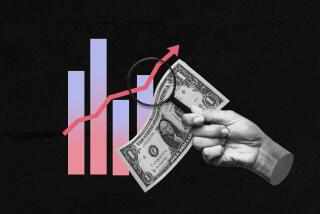Poverty Rate Drops Slightly; 14% Remain Poor
- Share via
WASHINGTON — The nation’s real family income rose 1.3% overall last year--5% for black families--but the poverty rate remained only a breath away from the 1984 figure, the Census Bureau reported Tuesday.
In 1985, 33.1 million people, or 14%, were impoverished, the bureau said--not statistically different from the 33.7 million in poverty a year earlier, when the rate was 14.4%.
“The poor aren’t going anywhere,” said Isabel Sawhill, an economist at the Urban Institute in Washington. “We’re stuck with a high level of poverty, and people who said it was a temporary phenomenon are being proven wrong.”
Second Drop in a Row
But at a news conference, Gordon Green, chief of the Census Bureau’s population division, noted that last year’s slight decline in poverty was the second drop in a row.
The 1985 decrease was smaller than the one in 1984, Green said, but “it is the right trend. It looks more like the long-term trend we’ve had in periods of prosperity.”
The 5% increase in black families’ median income--after inflation is accounted for--outstripped the 1.7% rate among whites, the census report showed. The figure for Latinos was virtually unchanged. Black families in the West and those headed by women showed the largest gains in their categories.
Green called the increase in income among blacks “very significant” and attributed much of it to the improved economy. “Benefits tend to spread out” as economic recoveries continue, he said.
Black Rate Highest
Nevertheless, the black poverty rate in 1985 was 31.3%, the highest of any group. That represents a decrease from 33.8% in 1984, but it still concerns many advocates for the poor, who noted that in 1985 almost 9 million blacks and 23 million whites fell into the government’s official category of the poor. About 5 million persons of Spanish origin also were classified as poor, but that figure included members also counted among the other two groups, the bureau said.
Latinos, whose poverty rate of 29% in 1985 was up from 28.4%, may replace blacks as the poorest group by the end of this decade, said Robert Greenstein, director of the Center on Budget and Policy Priorities.
Single Level $5,469
In 1985, the federal definition of poverty ranged from annual income below $5,469 for one person to $22,083 for a family of nine or more. The poverty threshold for a four-person family was $10,989.
Robert D. Reischauer, an economist who is a senior fellow at the Brookings Institution in Washington, noted that the nation’s poverty rate stood at 14% when the Reagan Administration assumed office in 1981, and he said that “we seem to be plateauing out” at that figure.
“We’ve been treading water in a sense,” Reischauer said.
Non-Cash Benefits
Green said the poverty picture would be somewhat better if non-cash benefits, such as medical care, food stamps and subsidized housing were counted as income. He said those programs will be included in a more detailed poverty study scheduled for release next month.
Among other findings in the study released Tuesday:
--Per capita income was $11,010 overall, up 2.1%. For whites, per capita income rose 2%, to $11,670; for blacks, it was up 4.9%, to $6,840, while for Latinos, it was $6,610, virtually no change.
--The Northeast, which enjoyed the most significant economic recovery, experienced the greatest drop in poverty as it fell from 13.2% in the region in 1984 to 11.6% last year.
--The poverty rate for children under age 18 declined slightly--from 21.3% to 20.5%--while it edged up among the elderly, from 12.4% to 12.6.%.
--Median income for women working full-time rose 2.1%, while men’s earnings remained statistically unchanged.
More to Read
Sign up for Essential California
The most important California stories and recommendations in your inbox every morning.
You may occasionally receive promotional content from the Los Angeles Times.










